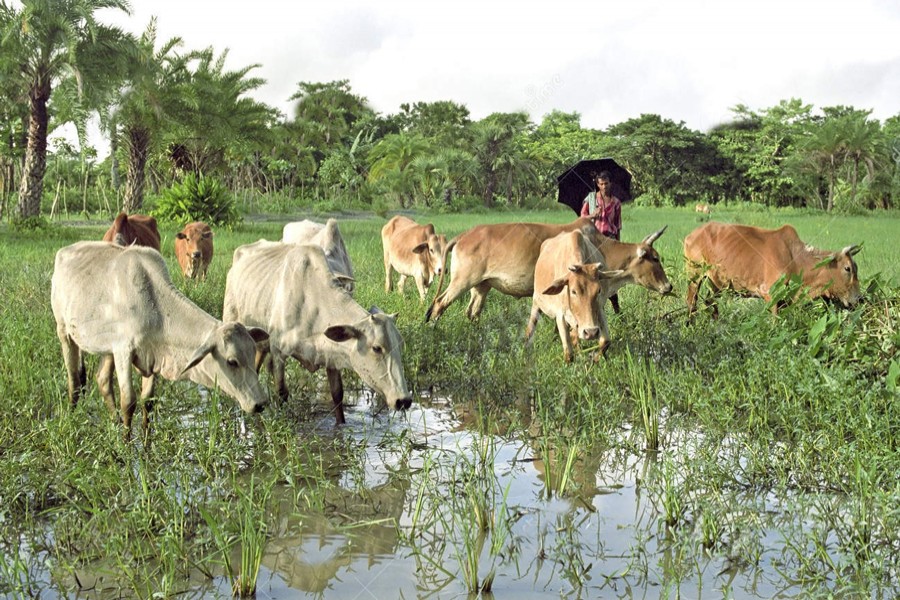Lakshmi Babu, Raja Babu, Laltu and Paltu are proper names of different breeds. If the first two are heavyweight, commanding respect, the last two are surely lightweight and usually used as nick names. The first part of the first name, moreover, is feminine gender and is hardly used without a suffix such as kanta, ranjan etc. But all the same the name stands for gentleness, amiableness and perhaps a little dose of docility. Raja Babu, on the other hand, is a name that gives an impression of imperial personality tinged with arrogance and could-not-care-less attitude.
Laltu-Paltu are names of a different genre signifying hardly any substantive quality except perhaps the red colour in the first case and an endearing identification of a loved one in the second case. Irrespective of cast or creed, such names are acceptable to all. If you are already itching and wondering about this detailed nomenclature, you are not likely to be disappointed if you wait a bit; for these are the names of oxen or bulls reared by common people as part of their household livestock initiative.
Lakshmi Babu is a bull of huge size, weighing reportedly about 50 maunds. It is so enormous and impressive that people from far and near come to have a glimpse of this sacrificial animal. Indeed, it has earned quite a fame for its size, girth and weight. Bought two years ago, the bull is lovingly raised by a woman whose husband is an immigrant in a Middle-east country. Parties from Dhaka and other places started visiting the house from last year. Taka 1.5 million was offered last time but the bull-rearer did not like the customer. This time she expects a price in the range of two million for the bull. However, if her instinct says that the buyer will not sacrifice the animal most lovingly, she will not accept the price. Instead, if she considers a buyer humble enough and perform the act of sacrifice in a mind of genuinely pure religious fervour, she will not hesitate to consider a reasonable concession.
How lovingly the woman with help from her father in-law and son took care of the bull is reflected in the feeding pattern of the animal. Banana, apple, pears and other fruits along with cow feed and green grass were on its regular menu. How much did it cost? The woman claimed it to be no less than Tk 1,000 a day. Certainly more than is required to raise up a human child.
Considering Lakshmi Babu's voracious consumption habit, Raja Babu should eat even more. Because, this bull is even larger than Laksmi Babu. It is claimed to be the largest in the country. However, there is no official recognition for this claim. Details are lacking about its rearing and feeding pattern. But one thing is clear that there will be no need for taking them to cow market. Customers will buy them directly from their owners. But the real problem will involve picking those huge bulls on trucks.
What is however impressive is that cow fattening has been taken to a new height in this country now. If hormone injection is not applied, these two bulls should be a fine example of bull rearing. In case of Lakshmi Babu, the upazila veterinary officer helped guide its rearer with advice and immunization. Maybe, in case of the other bull too, similar help was provided by the local livestock office.
If Lakshmi Babu and Raja Babu are contenders for the largest bull stamp, Laltu and Paltu have their own especiality. They are twins. Although twins, they too are of enormous size. They too are expected to fetch no less than Tk 1.5 million for each.
It is quite possible that there are huge bulls elsewhere in the country which the media could not trace for carrying stories on them. But about one thing there is no doubt that the country has worked wonder in the area of cow rearing. Reports are frequent now that cow farms in the country will supply the major portion of sacrificial animals this year. When the Bharatiya Janata Party came to power with Narendra Modi assuming the premiership in India, the disruption in the supply chain of sacrificial bulls left a lesson for farmers in Bangladesh. They took up the challenge and started raising cows in their farms. Now the country is nearly self-sufficient in sacrificial animals. Hats off to farmers who were the architect behind this marvellous feat.


